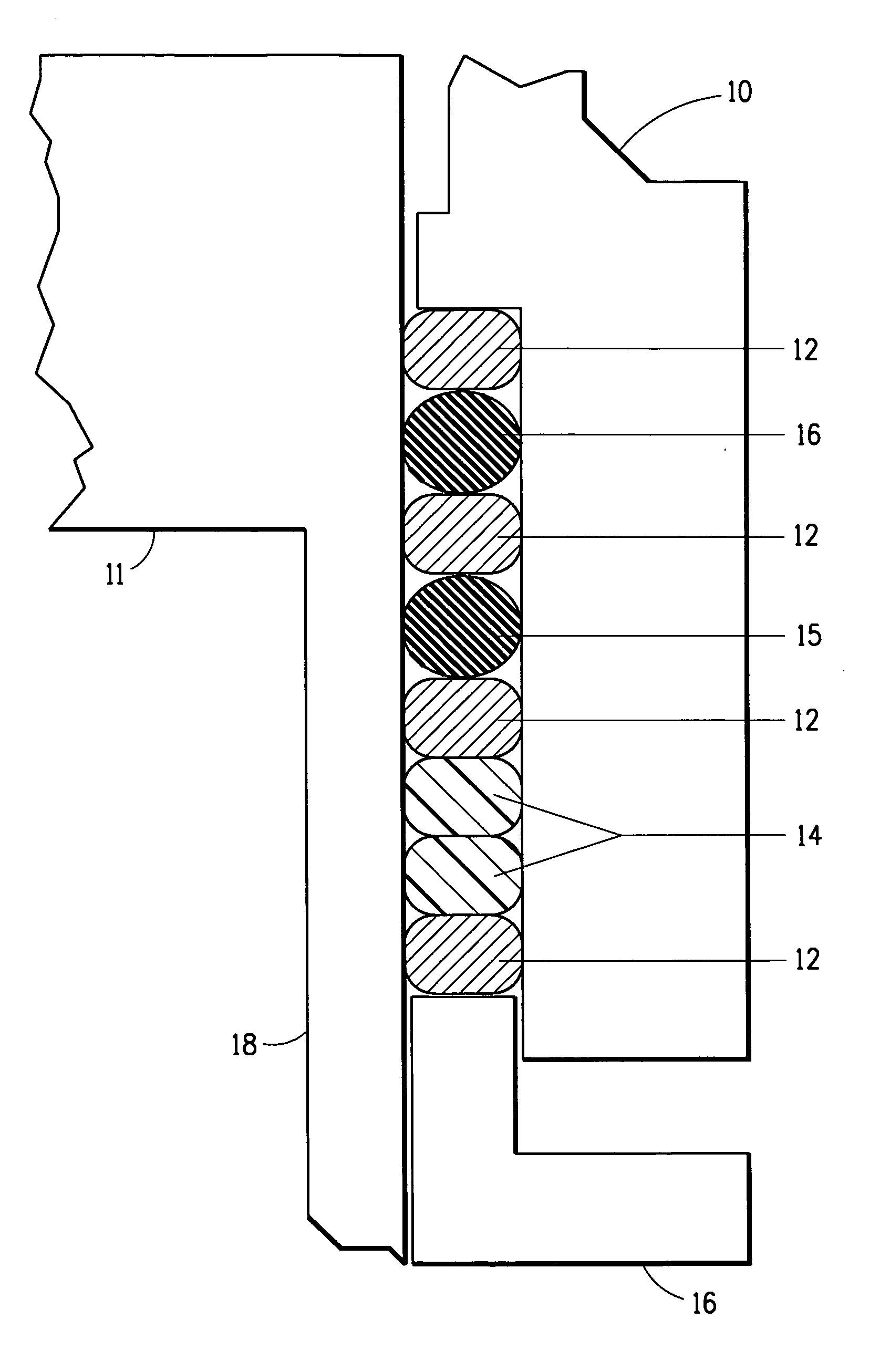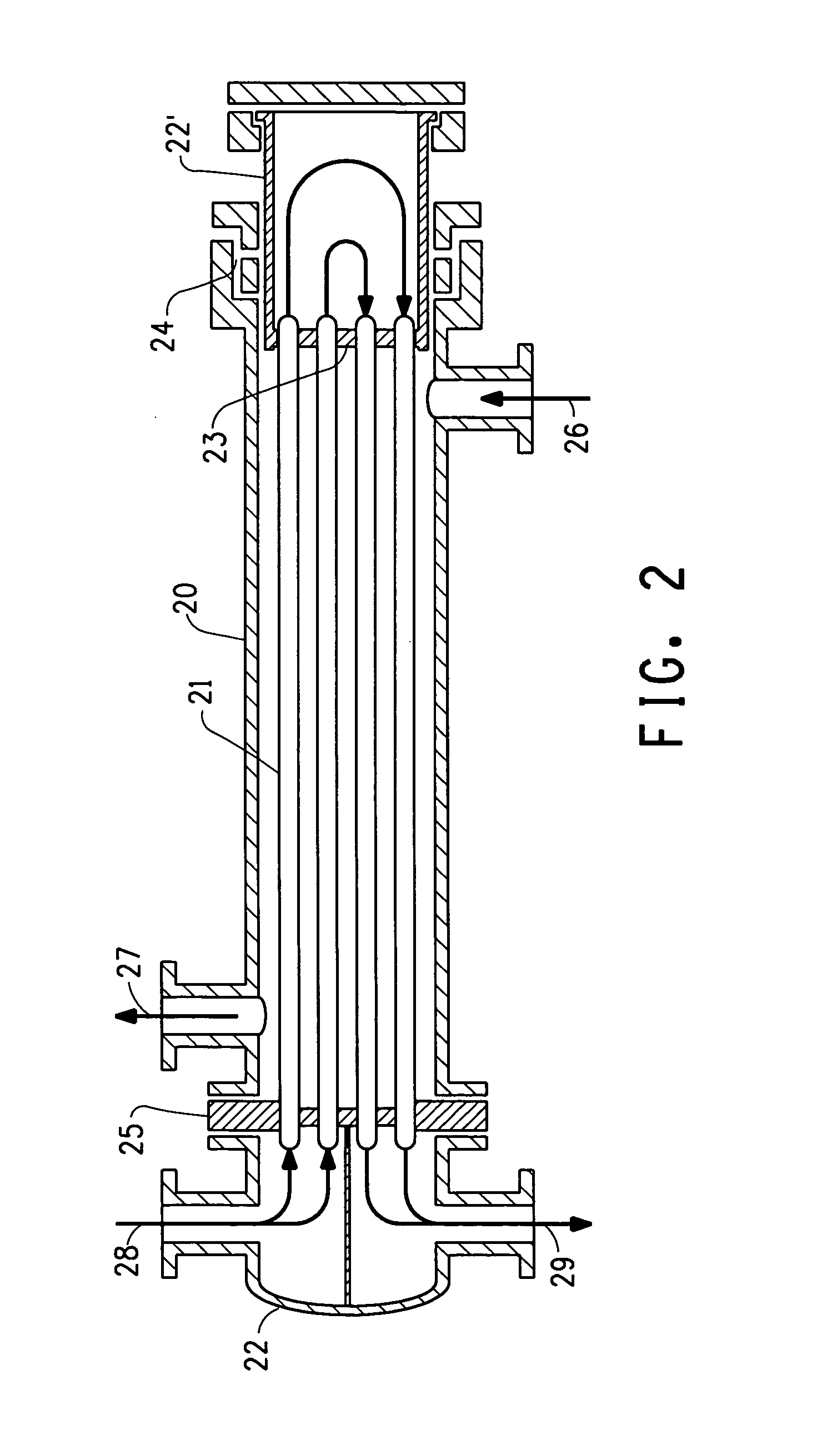Heat exchanger seal
- Summary
- Abstract
- Description
- Claims
- Application Information
AI Technical Summary
Benefits of technology
Problems solved by technology
Method used
Image
Examples
Embodiment Construction
[0039] The seal assembly of the invention can be used to seal between any two metal surfaces in which it is required to allow relative motion between the two surfaces during thermal cycling. An embodiment of the invention is suitable for use as a seal assembly in a floating head heat exchanger. The invention can best be understood by reference to the Figures.
[0040]FIG. 1 shows an example of an embodiment of the seal assembly of the invention. The sealing system comprises the shell or other wall of the heat exchanger (10) which is required to be sealed against a tubesheet (11) which may have a skirt (18). The seal assembly (12-15) comprises non-extrudable packing layers (12) that can act as load distribution layers. At least one non-extrudable packing layer is disposed at each end of the seal assembly.
[0041] An example of a non-extrudable packing layer would be copper wire braided packing available from ChemStar Packing (Mulberry, Fla.) such as “style 49”. Any packing material can ...
PUM
 Login to View More
Login to View More Abstract
Description
Claims
Application Information
 Login to View More
Login to View More - R&D
- Intellectual Property
- Life Sciences
- Materials
- Tech Scout
- Unparalleled Data Quality
- Higher Quality Content
- 60% Fewer Hallucinations
Browse by: Latest US Patents, China's latest patents, Technical Efficacy Thesaurus, Application Domain, Technology Topic, Popular Technical Reports.
© 2025 PatSnap. All rights reserved.Legal|Privacy policy|Modern Slavery Act Transparency Statement|Sitemap|About US| Contact US: help@patsnap.com



